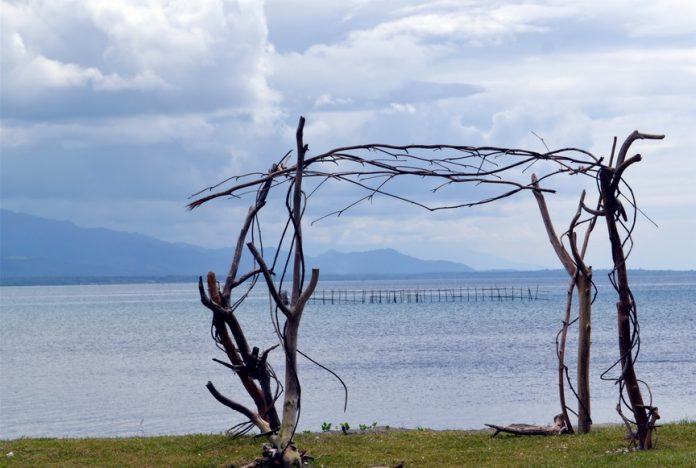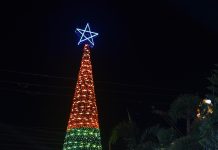Tagum City, located 55 kilometers north of Davao City, is the only city in Davao Region which has no natural attractions to offer among its guests and visitors.
To lure people from neighboring areas, those from other parts of the country and even foreigners, the city hosts fourteen festivals throughout the year. Among the famous ones are the Musikahan and Durian Festivals.
Fortunately, Hijo River traverses Tagum. Originating from Compostela Valley, it is a stream whose estimated terrain elevation is 8 meters above sea level. The river was so famous that a sprawling 760-hectare property is named after it: Hijo Resorts Davao.
But before that, the place is noted for its thriving banana and coconut plantation. It made  history when a shipment of Cavendish bananas were exported to Japan in 1969 – the first banana plantation in the Philippines to do so.
history when a shipment of Cavendish bananas were exported to Japan in 1969 – the first banana plantation in the Philippines to do so.
In April, 1986, Jose “Boy” Tuason acquired the property and gave its present name. By 2012, Hijo has established itself as the first and only eco-agri tourism destination of the country. It earned such description by “using the property’s natural landscape as a way to increase awareness and promote sustainable tourism and nature conservation.”
And it is for this that the group of third year journalism students from the Ateneo de Davao University decided to visit the place as their main feature for a magazine each group was producing.
I accompanied the students as one of the mentors and to be a judge of their outputs later on. But what made the visit interesting was the resort’s guided tours at the banana plantation and the 60-hectare century old forest. It also offers a river cruise.

Let’s take a closer look at these tours. During the plantation tour, we learn how the planting materials of Cavendish bananas are produced. From there, we moved to packing house, where newly-harvested bananas are brought. The bananas are weighed first before they are separated from the trunk. They are fully cleaned and then dried before they are packed for export.
A bonus was a first-hand lecture and demonstration on how they manufactured fresh and organic coco products for global market – including the coco sugar, which is good for diabetics.
The forest tour was a completely different story. Having grown-up in the city, most of the students never experienced getting inside a forest. Most of them were awed when the saw hundreds of wild pigs and Philippine long-tailed macaques freely roaming around inside the forest.
Although we were inside the van, I was able to take a closer look at the animals. In fact, I was able to take a good shot of a monkey breastfeeding her child. The macaques are endemic in the Philippine forests and woodlands and they can be found mostly in areas where mangroves thrive.
To really get deeper into the forest, we had to do a canopy walk in the 9 hanging bridges that were tied to trees called “dao.” Wikipedia gives this brief description: “(Dao) is a tropical canopy tree distinguished mostly by its height (reaching up to about 45 meters) for its greyish-brown trunk which is branchless up to about 20 meters, and for its narrow buttresses which can reach up its trunk up to 6 meters high.”
When we got down from the hanging bridges, we followed the ground trail which brought us back to the place where we started. Along the way, we witnessed the beauty of lush foliage of various endemic flora in the wild.
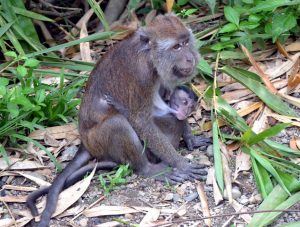 One of those that really caught the attention of the students was the rattan called “palasan.” “How can this become a chair when it is so thorny?” one wondered. The guide had to stop and explain the process of harvesting rattan poles.
One of those that really caught the attention of the students was the rattan called “palasan.” “How can this become a chair when it is so thorny?” one wondered. The guide had to stop and explain the process of harvesting rattan poles.
The river cruise was also very interesting. Here, you get to see the beauty of the century old mangrove forest along the Madaum river. You also get a glimpse of different species of birds inhabiting the area. If you like adventure, you can roam around the place using the kayak.
We ended our tour at The Spot, a dampa-style restaurant which has been Halal-certified by the Department of Tourism. Diners can choose to first go fishing and crabbing and bring their catch to the kitchen, which the chef can prepare as per The Spot’s menu.
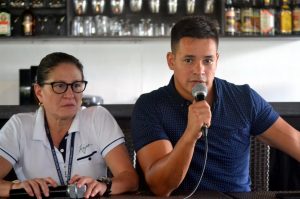
But then, people flock to this resort because of Banana Beach, which is named so because it is located inside the banana plantation. If you don’t like going to the beach, you can always take a deep at its cozy infinity pool.
Not far from the infinity pool is a man-made reefs under the Banana Beach waters. Here’s a statement from the resort on how it came to be: “Harry Morris, a marine biologist, spearheaded the resort’s efforts to build and maintain a healthy ocean environment in Davao Gulf. Twenty artificial reefs, known as ‘bommies,’ were created out of recyclable scrap metal and porous stones.”
The “bommies” were transferred to the waters fronting Banana Beach. Although the operation was completed in 2016, Morris continues to monitor the development of the reefs, implanting coral and keeping track of the plankton and pelagic fish that have now become their home.
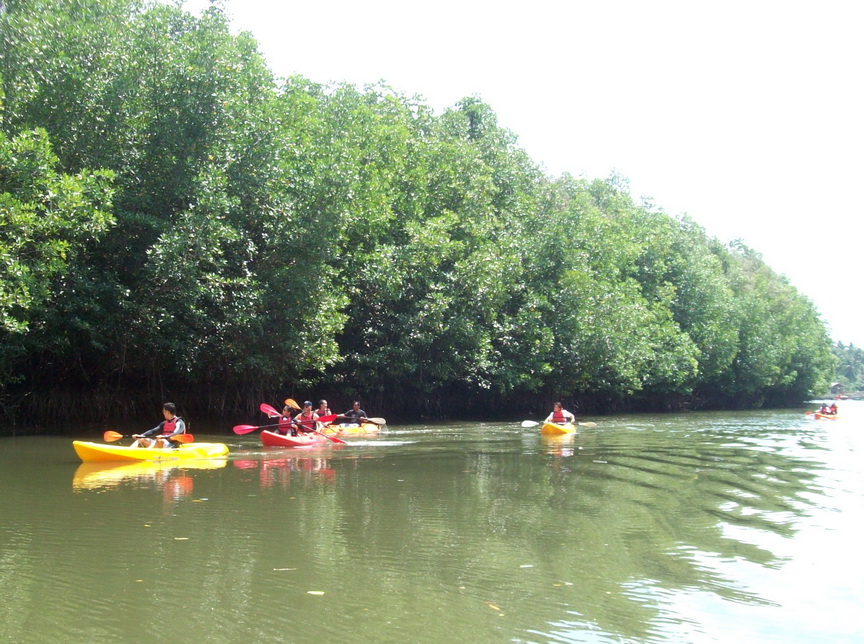
Aside from kayaking at the river, other water sports activities you can do are jet-skiing, snorkeling, and paddle boarding.
Now, if you’re going to stay, there are places to stay. Along the four-kilometer stretch of beach are casitas which complements the tropical vibe of the resort. There are two types available: the air-conditioned premium casitas and the classic casitas which are built to look like the traditional bahay-kubo.
These are just some of the few activities you can do at Hijo Resorts Davao’s 177-hectare banana plantation, 92-hectare coconut plantation, 60-hectare forest and 4.5-kilometer river.

